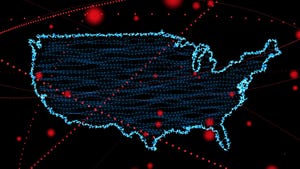How Data Center Managers Show Their Value
As a data center manager, the deeper your knowledge of what is happening in your environment, the better you can provide and show value to your organization. Every year, Nemertes interviews hundreds of enterprise representatives asking, among other things, where they are investing, in what technologies and how successful those investments are.
May 8, 2012
Jerry Gentry is Vice President, IT Program Management at Nemertes Research
As a data center manager, the deeper your knowledge of what is happening in your environment, the better you can provide and show value to your organization. Every year, Nemertes interviews hundreds of enterprise representatives asking, among other things, about the technologies in which they are investing, and how successful those investments are. I had the good fortune of interviewing quite a few companies regarding their data center plans and performance.
Although a lot of analysis needs to be done, I found it interesting that few of the people I interviewed collect data on the performance of the applications. Let me be clear. I am not saying they didn’t pay attention. In most cases, they collected and stored logfiles and standard system performance. The classic uptime and availability statistics are all in play. Many include summary information from these areas in dashboards they produce on a periodic basis. This is all good, but it is only a first step.
I saw two article titles the other day as I bounced around the web in search of information about CIOs. One of them predicted the demise of the CIO later this decade because most CIOs are not providing the value add that their enterprises need to stay fresh and competitive. The other article raised a question: should the CIO report to the CFO or the CEO. Seeing those two titles within a matter of minutes got me thinking down my own path. How can a data center manager show value?
Let’s be honest, radical technical advances in the data center infrastructure are very cool, but risky to implement without due diligence. In most cases they are also costly. Sure, operating costs down the line may be saved, but the initial outlay for a forklift upgrade is usually a large number. To that end, we are seen as a cost center. And the best we show for the investment the business makes in us is a dashboard of performance indicators.
How do we get out of the jam? I suggest that you need to look inside the box, not outside the box. You have been tasked with an awesome responsibility. You are the custodian of the applications that move the enterprise forward. They live and breathe on your infrastructure. Get to know them. Your end users all know those applications because they deal with them every day. They don’t know NAS from SAN, so telling them how cool the storage upgrade is will only lead to cost questions. Tell them how the HR application is performing from Australia and how a small change in the database will improve performance by an order of magnitude. You will be a hero, not a cost center.
Here’s the rub. You can’t do it alone. Performance is an end-to-end analysis. Network and desktop are integrally involved in how an application feels to an end user. Yet, no discipline has the total view.
What you do have is a lot of data already. With some simple approaches and maybe some investment in tools, you can turn the management information you have into information of value – metrics that matter.
In Part 2 of this series I will explore a few approaches that will begin to change the kind of conversation you have with your leadership and your internal customers.
To get more useful data center management strategies from Nemertes Research download the Q1 2012 Data Center Knowledge Guide to Enterprise Data Centers.
About the Author
You May Also Like
.jpg?width=300&auto=webp&quality=80&disable=upscale)



.jpg?width=300&auto=webp&quality=80&disable=upscale)


